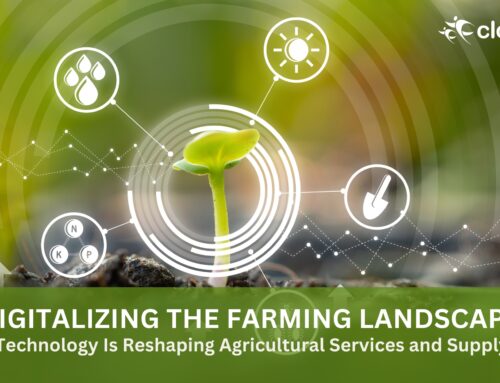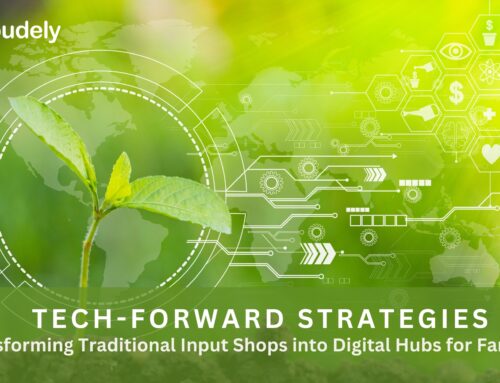Generative AI is a revolution in the sector of AI. This technology is reshaping companies globally, changing how businesses connect with consumers, accelerating research and development, and fueling innovations. If you are a business leader, it’s crucial to be aware of how to unlock the full potential of Generative AI. In this article, let’s take a look at the AI terms that every business leader must know.
Table of Contents
What do you understand by Generative AI?
Generative AI is a type of AI that can make its content. It learns patterns, grasps situations, and uses this knowledge to craft unique content. From making music, writing articles, and designing products to even building software, Generative AI has it covered.
How do Traditional AI and Generative AI differ?
Traditional AI mainly focuses on sorting and examining data, spotting trends, and making inferences from them. On the other hand, Generative AI uses advanced deep learning, leveraging vast datasets it’s trained with to create fresh and distinct content. This content can vary from text and photos to audio tracks and films, showcasing its remarkable adaptability.
Let’s dive into two examples to understand the differences better:
- Traditional AI
Email Organization Tool: Traditional AI uses set rules to organize your incoming emails into specific folders. For instance, it might direct emails from ‘client X’ to the ‘Client’ folder or ones with ‘Invoice’ in the subject to the ‘Accounts’ folder.
- Generative AI
Customized Marketing Outreach: Using deep learning, Generative AI can craft individualized marketing messages. It adapts based on previous customer actions and their background, shaping messages to fit each person’s likes, and it gets better as it gathers more data.
Now, let’s know more about AI terms everyone must know:
Artificial Intelligence
AI encompasses the idea of machines doing jobs usually needing human thought, like problem-solving, observation, or logical thinking.
Machine Learning
ML, which falls under AI, involves using algorithms to sift through data, learn from it, and make forecasts or choices without directly instructing the machine to do so.
Deep Learning
Deep learning, which is part of ML, mimics data’s high-level patterns using several layers of processing, with each layer refining the data understanding from the previous one.
Take image recognition: while a regular program might look for set patterns, a deep learning system breaks down the image by aspects (like forms, hues, and textures) and learns to identify patterns in a tiered way—much like how our brain discerns things.
Neural Networks
Neural networks mimic how the human brain works and are fundamental to deep learning. Built to detect patterns in information, these networks consist of linked layers of nodes (or neurons) that share data, allowing them to understand and learn from the data.
Model
An ML model is a unique representation derived from data using an ML technique. Instead of following predetermined steps like traditional software, an ML model digests data and makes choices based on its learnings.
For instance, training a model with real estate data could let it forecast home prices in a particular area. But you wouldn’t feed it fixed rules like “if it’s this area, increase the price by this amount.” Instead, it discerns how location (and other factors) affects house prices from the trends seen in its training data.
Training
Training in ML is the stage where the model absorbs information from a dataset. The aim is for the model to attain a knowledge depth that enables it to predict or decide correctly.
Supervised Learning
Supervised learning is an ML method where the model is given labeled training data. The goal is for the model to learn from given input-output pairs, eventually understanding a function that links input to output.
For instance, imagine creating a system to identify if an email is spam. Using supervised learning, this system would be trained with many emails already marked as spam or not. The model would then recognize features of spam emails, like common phrases or trends. Once adequately trained, the system can classify new emails as spam or not based on what it’s learned.
Unsupervised Learning
Unsupervised learning is a method in ML where the model trains on data without clear labels, typically to uncover underlying patterns or inherent structures in the data.
Consider customer segmentation in marketing as an example. Imagine a company with a vast pool of customers and a marketing team aiming to tailor strategies for distinct user groups but without pre-defined categories. This is where unsupervised learning steps in.
Using approaches like clustering, the team can analyze purchase behavior to cluster customers into separate categories. These clusters signify customers with similar buying habits, tastes, or characteristics, even though the model had no prior knowledge of these groupings. With these new segments in hand, marketing strategies can be custom-fit to each group.
Generator
A generator is a part that learns to produce new data that looks like the data it trained on.
Natural Language Processing
NLP is an area of AI that centers on how computers and humans communicate using natural language. It aims to make machines grasp and react to text or spoken words similarly to humans.
Language Models
LMs are AI models designed to comprehend and produce human language. By training on extensive text data, LMs grasp the patterns of human language for better understanding.
Generative Pre-trained Transformer
GPT is a LLM created by OpenAI. These models can craft text that resembles human writing by estimating the next word based on the preceding words in the text.
Transformer Models
Transformer models are a kind of neural network design excelling in NLP activities. They handle input data simultaneously (instead of one after the other), enhancing their efficiency.
Token
In NLP, a token is a basic language unit, often a word or part of a word in a text.
Generative AI
Generative AI is an AI branch that concentrates on making new content like pictures, tunes, voices, or writings. It studies current data and aims to produce alike content.
Sentiment Analysis
Sentiment analysis is an NLP method that identifies the emotion conveyed in text.
For instance, a researcher might employ sentiment analysis to sort tweets regarding a current news event, deciding if each tweet views the situation positively, negatively, or neutrally.
Data Augmentation
Data augmentation is a method that boosts the training data quantity by creating slightly altered versions of existing data, enhancing the model’s effectiveness.
Edge AI
Edge AI means executing AI algorithms on devices like smartphones or IoT gadgets, enabling immediate data processing at the source and ensuring timely operations and privacy.
A prime instance of edge AI is Tesla’s self-driving feature. These cars employ potent AI to analyze sensor data and decide on driving actions instantly. Such rapid data handling and decision-making directly within the car wouldn’t be feasible if the car always relayed data to the cloud for analysis.
Chatbot
A chatbot is a software tool that mimics human chat, whether through voice or text, using set guidelines or AI methods such as NLP.
Conclusion
Using generative AI for customer interactions or operations can transform your business. While this glossary provides a good introduction to core ideas, it may be time for your company to elevate its game using Generative AI.






